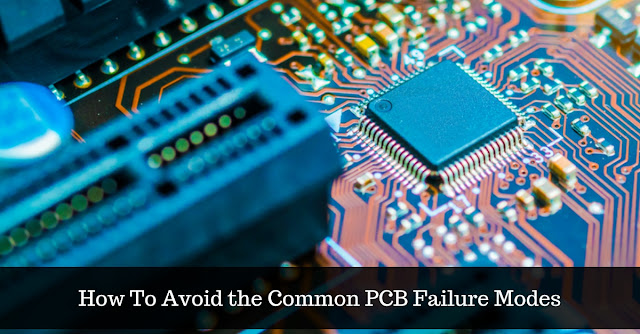Recognize the Five Most Common Printed Circuit Board Failures
The tools
or instruments that we use on a daily basis, printed circuit boards are found
in virtually every tool. Right from computers and cell phones to television and
portable speakers, we completely rely on PCBs to make our world work. However,
sometimes these printed circuit boards do not work the way they should, due to
material defects or environmental factors.
Even a
well-designed PCB can have problems; let us have a look at the few common
reasons for PCB failure.
Environmental Factors
As
intended, the environment in which a printed circuit board is kept or
manufactured can impact the ability of PCB to function. Since few materials are
prone to expansion under thermal stress, excessive heat or humidity can cause
boards to fail. In spite of cleanliness of a given environment, it can still
lead PCB boards’ failure. At the time of manufacturing, hair, dust, insects and
even fibres make their way into PCBs. However, it is vital to maintaining a
clean environment which conducive to proper production, at the time of circuit
board assembly.
Soldering Concerns
A PCB's
solder is what maintains the connection between the component and its circuit.
This result in making PCB a vital part of circuit board assembly. However, with
too much moisture solder can sometimes become contaminated. As a result, it
causes the solder to become conductive and cause short-circuiting. While this
is often related to some of the environmental factors outlined above, it is
imperative to watch out for soldering issues in particular during assembly.
Material Defects
A lot of
things can conceivably go wrong at the time of` printed circuit board assembly.
Amidst the most popular causes for board failure, a material defect is a chief.
For instance, the PCB will not work the way it needs to, if a material used on
the board has a fracture or delamination, or if materials are simply impure.
During the PCB fabrication and assembly process, these defects can be an issue
from the very start or can present themselves. Short circuits and crossed
signals can occur when the layers are misaligned. Printing technique problems
actually account for 70% of all surface assembly quality issues with boards.
Chemical Leakage
In certain
PCB components, chemical fluids can be found, while most are removed during
manufacturing. This medium is possible for traces of these fluids to be left
behind or for leaks to occur. As a result, this leakage can eventually lead to
short-circuiting or even corrosion, rendering a PCB unusable. To note, it is
very vital to check for leakage and fluids left behind during the Printed
Circuit Board inspection.
PCC
specializes in rapid PCB assembly and system manufacturing services. We provide
PCB Assembly Services for low and medium volume, high mix products, to varied
customer markets globally. Our CCA, circuit card assembly lines are versatile
for varied sizes and substrates types (FR4, Rogers, copper, duroid, ceramic,
metalcore aluminium, CEM 1, and CEM 3). From multi-layered to flexible PCBs, we
have expertise in each aspect of Printed Circuit Board Assembly &
manufacturing services. We support simple, small boards to complex HDI boards
in volume or prototypes.




Comments
Post a Comment